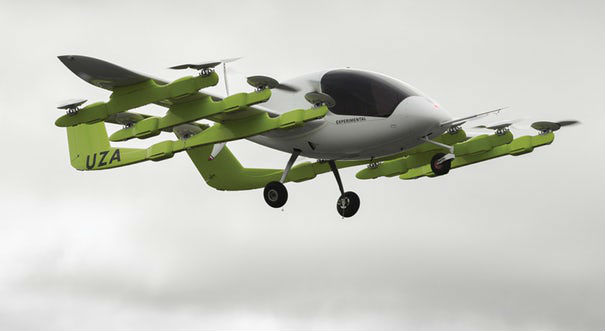Kitty Hawk, the same group of California dreamers who introduced the leisure-focused Flyer last year, has revealed an all-electric, self-piloted air taxi in New Zealand. The company, which is backed by Alphabet’s Larry Page, has been working on “an aircraft so personal it could weave the freedom of flight into our daily lives” since 2010. Cora is the result – a two-seater short hop aircraft that can lift off and land like a helicopter and flies forward like an airplane.




The first self-piloted hover of Kitty Hawk’s flying taxi prototype took place at the end of 2011, but it didn’t graduate to vertical take-off and forward flight until February 2014. A human test pilot took control of the proof of concept flyer last August and, after reaching agreements for the development and testing of the project with the government of New Zealand in October 2017, the first self-flying air taxi was shipped over.

Flight tests soon followed under an experimental airworthiness certificate from the New Zealand Civil Aviation Authority and the United States Federal Aviation Administration. And now Kitty Hawk has officially launched the Cora project, and begun the journey to commercialization.
“Cora isn’t just about flying,” Kitty Hawk said. “It’s about people and mobility. It’s about the time you could save soaring over traffic. The friends you could visit. The opportunities you could seize. Cora is about giving everyone a fast and easy way to get around that doesn’t come at the expense of the planet.”
No production timeframe has been laid out at this point, the developers need to make sure everything works as advertised before making the aircraft available for public use. Though you won’t be able to realize your dream of zipping about in a privately-owned Jetson-like flyer, as Kitty Hawk says that Cora will be sold to service operators only.
Cora has been designed for two passengers. The idea is to make the flying taxi accessible to all, even those who don’t have a pilot’s license. To this end it can operate using self-flying software, and features three flight computers that make sure the aircraft knows where it is at all times, each able to work on its own to safeguard against systems failure.

Helicopter-like vertical lift off comes courtesy of its 12 wing-based propellers, and the aircraft moves forward with the help of a single prop at the rear. Each of the wing rotors can operate independently, so if one fails it won’t have an adverse effect on the operation of the remaining working units. Should the worst happen, and power does cut out during flight, a parachute will be launched to allow it to land safely.
Kitty Hawk says that Cora can fly up to 3,000 ft (915 m), has a range that’s reckoned to be about 62 miles (100 km) per charge, which will make it good for short hops, and it’s reported capable of getting up to 110 mph (180 km/h).
With companies like Airbus, Ehang and Uber also developing flying taxis, it seems that the air above us could soon be filled with relatively quiet and emissions-free people movers of all shapes and sizes.














